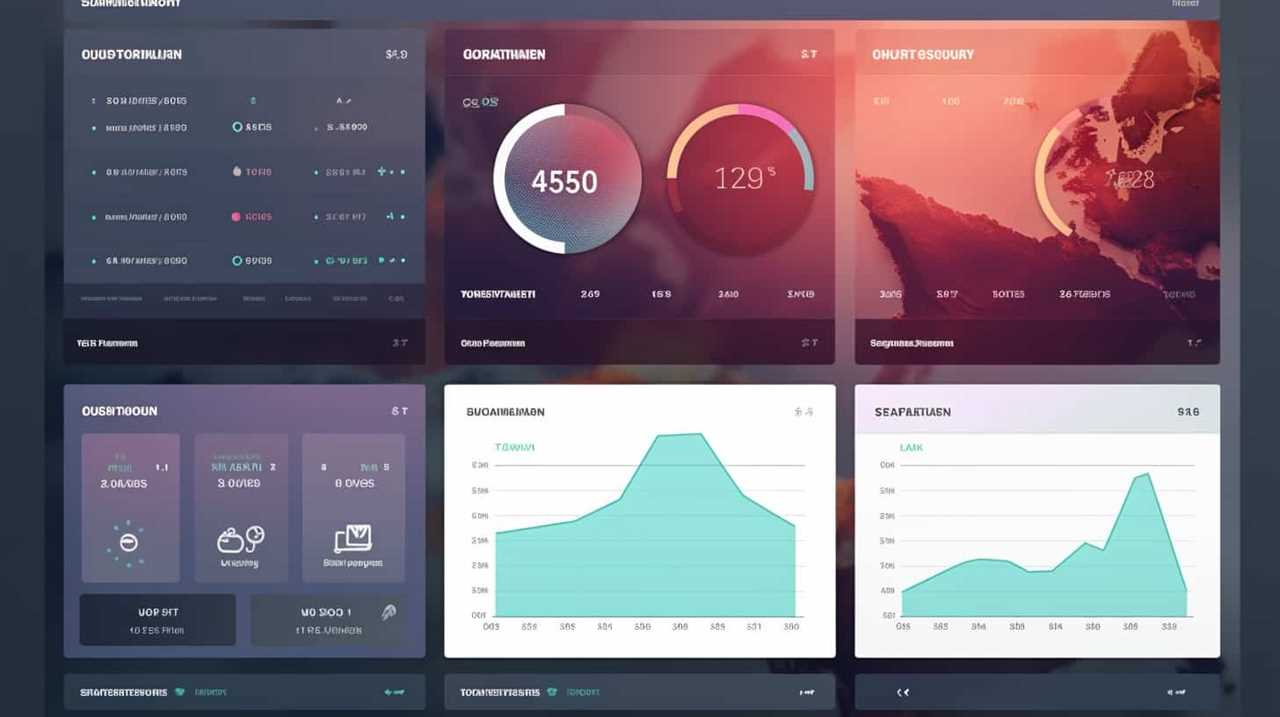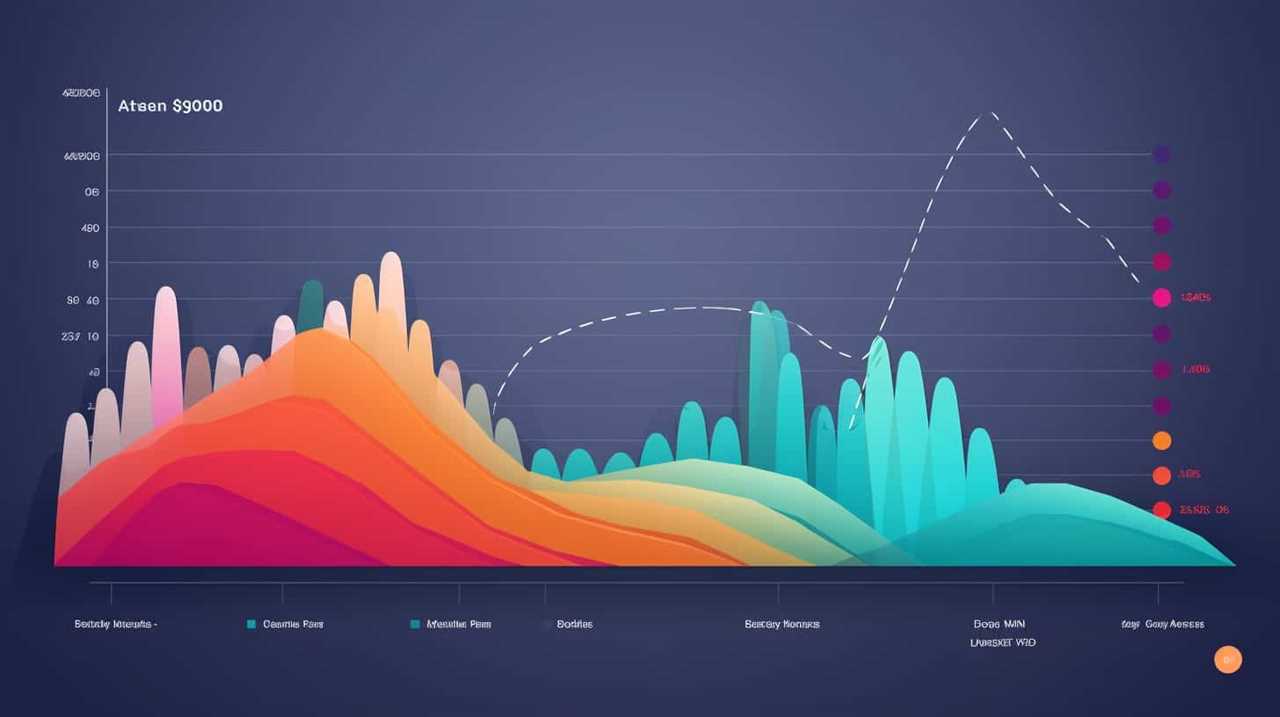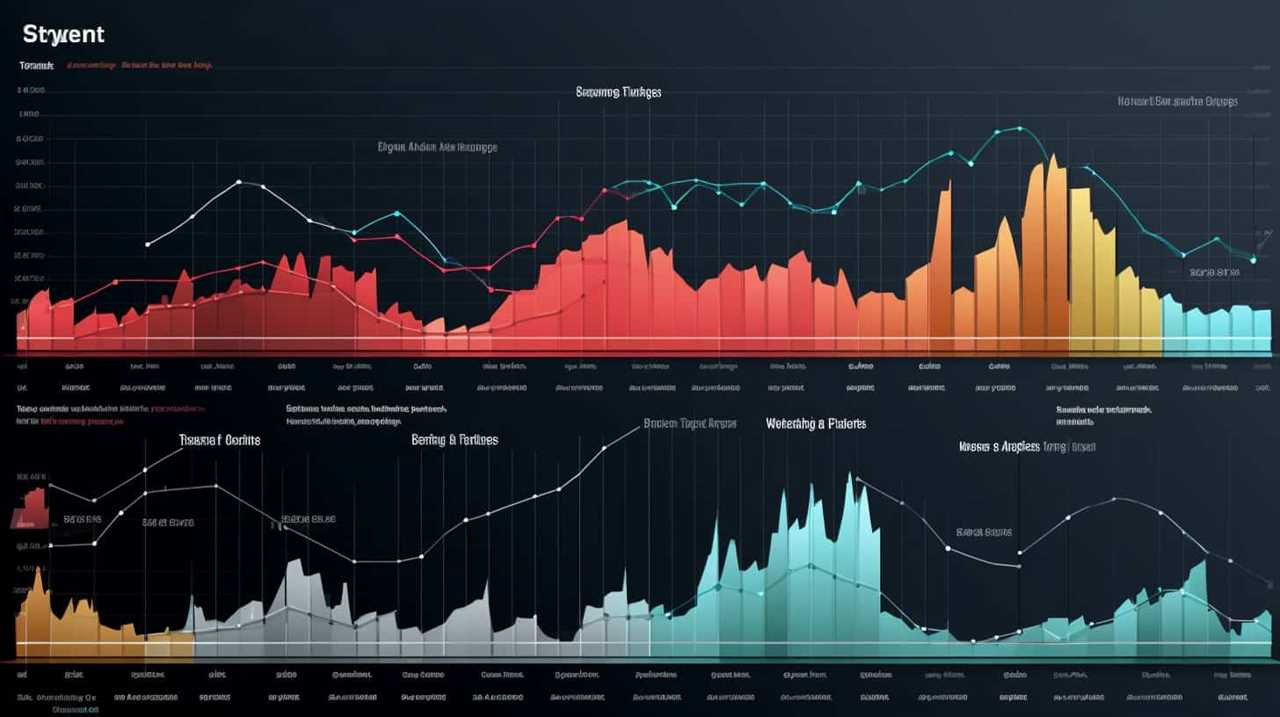Are you wondering what the job of an SEO analyst entails? Allow us to shed some light on that for you.
We dive deep into the world of search engine optimization, conducting meticulous keyword research and analyzing website performance.
With our strategic minds, we optimize on-page elements and develop a killer backlink strategy.
Monitoring and reporting on SEO metrics is second nature to us, and we stay ahead of the game by keeping up with the latest trends.

Oh, and did we mention we collaborate with the content team?
Mastery is our middle name.
Key Takeaways
- Conduct thorough keyword research and analysis to identify relevant keywords for SEO optimization.
- Analyze website performance and user behavior to optimize websites for maximum visibility and conversion rates.
- Optimize on-page elements such as website speed, meta tags, headers, and content to enhance user experience and improve website performance.
- Develop a comprehensive backlink strategy to enhance website authority, visibility, and credibility.
Conduct Keyword Research
We use various tools and techniques to conduct thorough keyword research as SEO analysts. Keyword research is a critical component of our work as it allows us to identify the most relevant and high-performing keywords for our clients’ websites.
By analyzing search volume, competition, and trends, we can determine the keywords that will drive the most organic traffic to their sites.

Additionally, we conduct competitor analysis to understand what keywords their competitors are targeting and how we can leverage that information to gain a competitive advantage.
Furthermore, we perform SEO audits to evaluate the effectiveness of our clients’ current keyword strategies and identify areas for improvement.
Through our strategic approach to keyword research, we ensure that our clients’ websites are optimized for maximum visibility and success in search engine rankings.
Analyze Website Performance
To further enhance our clients’ websites, we delve into analyzing their performance using various metrics and data. By examining website traffic and conversion rate, we can gain valuable insights into how well a website is performing and identify areas for improvement.

One important metric we look at is website traffic, which measures the number of visitors to a website. This data helps us understand the popularity and reach of a website, allowing us to identify trends and patterns in user behavior. By analyzing website traffic, we can determine which pages are performing well and which ones may need optimization.
Another crucial metric we focus on is the conversion rate, which measures the percentage of visitors who take a desired action on a website, such as making a purchase or filling out a form. By analyzing the conversion rate, we can identify any bottlenecks or issues in the user journey and make data-driven decisions to improve conversion rates.
In summary, analyzing website performance through metrics such as website traffic and conversion rate is essential in optimizing websites for success. By understanding how users interact with a website, we can make strategic improvements that lead to increased traffic and higher conversion rates.
| Metrics | Description |
|---|---|
| Website Traffic | Measures the number of visitors to a website |
| Conversion Rate | Measures the percentage of visitors who take a desired action on a website |
Optimize On-Page Elements
One of the key tasks an SEO analyst performs is optimizing on-page elements. This involves making strategic changes to various elements on a website to improve its overall performance and enhance the user experience.

One important aspect of on-page optimization is improving website speed. A slow-loading website can negatively impact user experience and lead to high bounce rates. By analyzing and optimizing elements such as image sizes, code efficiency, and server response time, an SEO analyst can significantly improve website speed.
Additionally, optimizing on-page elements also involves enhancing user experience. This can be achieved by optimizing meta tags, headers, and content to ensure they’re relevant, engaging, and easy to navigate.
Develop Backlink Strategy
Our team develops a comprehensive backlink strategy to enhance the website’s authority and improve search engine rankings. Link building techniques play a crucial role in this strategy.
By acquiring high quality backlinks from reputable websites, we can increase the website’s visibility and credibility in the eyes of search engines. High quality backlinks act as a vote of confidence for the website, signaling to search engines that it provides valuable and relevant content. This, in turn, can lead to higher rankings in search engine results pages.

Our approach focuses on building a diverse portfolio of backlinks from authoritative sources, ensuring that each link is relevant to the website’s content and industry. By implementing this strategy, we can strengthen the website’s online presence and drive more organic traffic.
Moving forward, we’ll monitor and report on SEO metrics to evaluate the effectiveness of our strategy.
Monitor and Report on SEO Metrics
We regularly monitor and report on key SEO metrics to track the effectiveness of our backlink strategy and ensure continuous improvement. Tracking SEO progress and assessing keyword rankings are crucial for optimizing our website’s visibility and increasing organic traffic. By analyzing these metrics, we can identify areas of improvement and make data-driven decisions to enhance our search engine performance.
To provide a comprehensive overview, we utilize a variety of SEO tools and platforms to collect and analyze data. One of the key metrics we focus on is keyword rankings, which allows us to evaluate our website’s visibility for specific keywords and identify opportunities for optimization. Additionally, we monitor metrics such as organic traffic, conversion rates, and bounce rates to gauge the overall effectiveness of our SEO efforts.

In order to clearly present this data, we have created a table below highlighting the main SEO metrics we track:
| Metrics | Description |
|---|---|
| Keyword Rankings | Evaluates website visibility for specific keywords |
| Organic Traffic | Measures the number of visitors from search engines |
| Conversion Rates | Tracks the percentage of visitors who complete desired actions |
| Bounce Rates | Indicates the percentage of visitors who leave the site without action |
| Backlink Quality | Assesses the authority and relevance of incoming links |
Stay Updated on SEO Trends
To stay updated on SEO trends, we actively follow industry news and analyze data to identify emerging strategies and opportunities for optimization.
Implementing SEO strategies requires staying ahead of the curve and understanding the latest trends and best practices in the field. By monitoring industry news and staying informed about algorithm updates and changes in search engine guidelines, we can adapt our strategies accordingly.
Analyzing data allows us to measure SEO success and identify areas for improvement. We track key metrics such as organic traffic, keyword rankings, and conversion rates to gauge the effectiveness of our efforts.

Collaborate With Content Team
To collaborate with the content team, we work closely with them to ensure that our SEO strategies align with their content creation efforts.
This collaboration begins with content planning, where we provide insights on keyword research and search trends to guide the content team in creating relevant and optimized content.
We also provide recommendations on the structure and format of the content to enhance its visibility on search engines.
Additionally, we work together to integrate SEO best practices into the content creation process, such as optimizing meta tags, headings, and internal linking.

Frequently Asked Questions
How Does an SEO Analyst Conduct Competitor Analysis to Determine Keyword Opportunities?
We start by conducting competitor analysis techniques to identify keyword opportunities. This involves researching their website, content, and backlinks. We then use keyword research methods to find high-potential keywords to target and optimize our website accordingly.
What Tools and Techniques Does an SEO Analyst Use to Analyze Website Performance?
Website analysis tools and performance evaluation techniques are essential for an SEO analyst. They allow us to assess website performance, identify areas for improvement, and make data-driven decisions to optimize search engine rankings.
How Can an SEO Analyst Optimize On-Page Elements to Improve Search Engine Rankings?
To optimize on-page elements and improve search engine rankings, we employ various techniques such as keyword research, optimizing meta tags, and improving content structure. These strategies are crucial for achieving higher visibility and organic traffic.
What Factors Does an SEO Analyst Consider When Developing a Backlink Strategy?
When developing a backlink strategy, we consider factors such as website authority and link building strategies. It’s crucial to analyze and implement tactics that will improve search engine rankings and increase organic traffic.

How Does an SEO Analyst Stay Updated on the Latest SEO Trends and Algorithm Changes?
Staying updated on the latest SEO trends and algorithm changes is crucial for SEO analysts. Continuous learning is important to adapt strategies. Data analysis plays a vital role in identifying trends and making informed decisions.
Conclusion
In conclusion, as SEO analysts, we play a critical role in improving website visibility and driving organic traffic.
One interesting statistic that highlights the importance of our work is that websites on the first page of search engine results receive 95% of all search traffic, while those on the second page only receive 5%.
By staying updated on SEO trends and implementing strategic optimization techniques, we can help businesses achieve higher search rankings and ultimately increase their online success.











